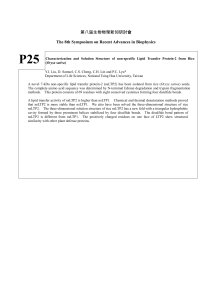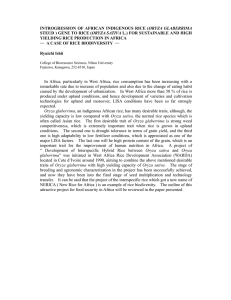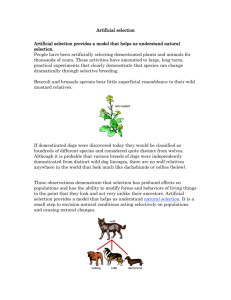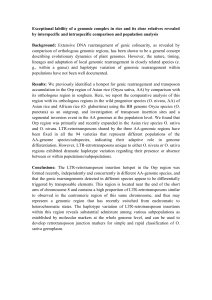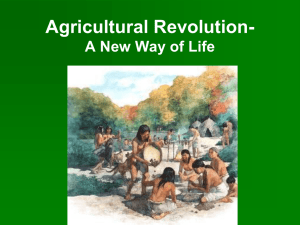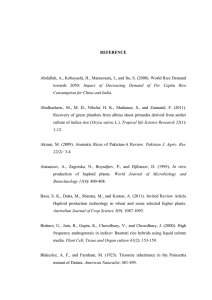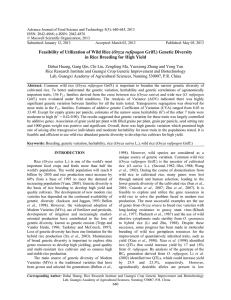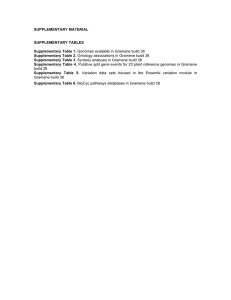Ethnographic research among hunter
advertisement
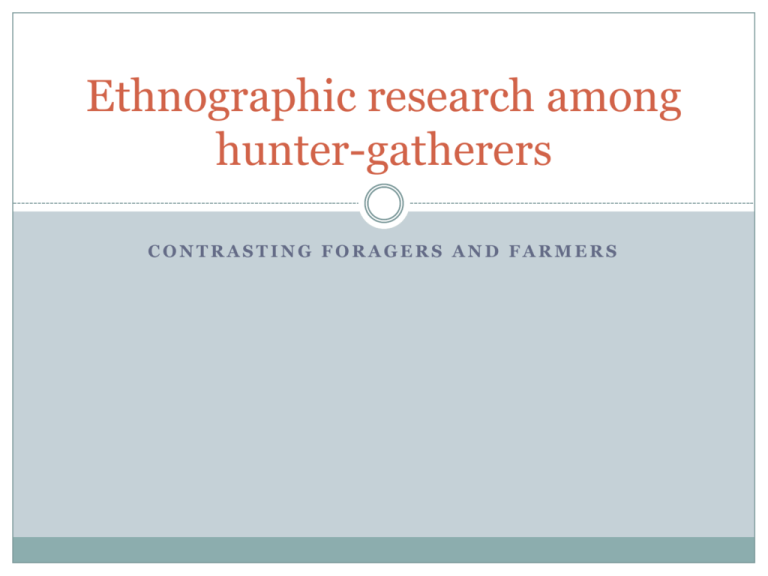
Ethnographic research among hunter-gatherers CONTRASTING FORAGERS AND FARMERS From Paleolithic to Mesolithic Paleolithic economies disappeared millennia ago. Definition of “Paleolithic” and “Mesolithic” Cultural anthropologists have studied groups using Mesolithic technology: hunting and gathering. Examples: Inuit (Eskimo) Bushmen of the Kalahari Desert Australian aborigines Pygmies of Central Africa Ethnographic Strategy: Participant observation “Holistic” description as the first task. Search for universal components of human cultures. Economic base: making a living. Kinship and marriage. The raising of children. Expressive dimensions of culture: music, art, etc. Power and conflict resolution Healing of illness. Disposal of the dead Religion: dealing with invisible spirits. Hunter-gatherer features Economy: hunting wild animals, gathering vegetation. Long distance running. Side theme: the loss of human body hair. Occupational specialization only by age and gender. Monogamous egalitarian gender relations. Domestic economy: Sharing of meat. Social organization: Nomadic bands. Much leisure time. Relgion: zoomorphic spirits. Shamans: healing the sick Kung Bushmen of the Kalahari Desert Kung woman processing meat Eskimo seal hunting Eskimo igloo Eskimos and dogs The transition to agriculture The Near East and the Horn of Africa Wheat, barley and sorghum Cattle, swine, goats and sheep Meso-America: corn and beans The Andes: potatoes, llamas, alpacas China: rice and millet Overview of Rice Three cultivated species Oryza sativa japonica, domesticated in what is today central China by about 9,000 years BP. Oryza sativa indica, domesticated/hybridized in the Indian subcontinent about 2500 BP Oryza glabberima, domesticated/hybridized in west Africa between about 3500 and 2800 BP. Domestication of rice in China Figs and rice may have been the earliest domesticates Time: end of the last Ice Age, about 10,000-12,000 BP, early Neolithic. Domesticated rice (Oryza sativa) was developed from a wild variety perhaps in the Yangtse River Valley in China Probably about 8000 years ago Maybe before 10,000 years ago. Two causal questions about domestication Diffusion or independent invention? Population growth: cause or effect? Three explanatory models for the transition to agriculture Independent invention Diffusion, borrowing, local modifications. Visitors from outer space. Example: Question of pyramids Pyramids: invention or imitation? Egyptian pyramids Mayan pyramids Emphasis on independent invention When confronted with similar problems, humans often devise similar solutions. There were independent movements around the world to pass from foraging to food growing, From hunting to raising livestock Population growth: cause or effect of domesticated food? Were people forced into food growing by population pressure? Or did population increase as a result of more abundant food? What other factors could have led to 1.the domestication of food? 2. population growth?

